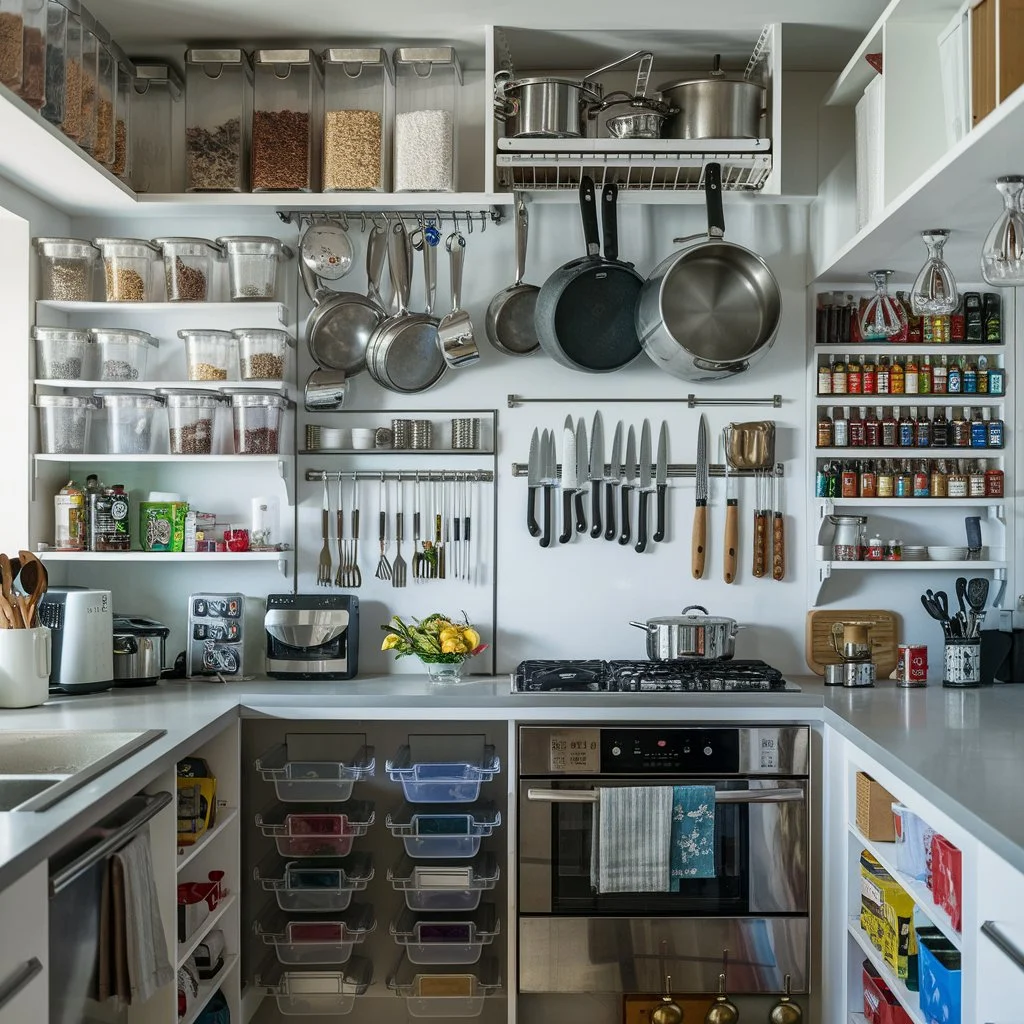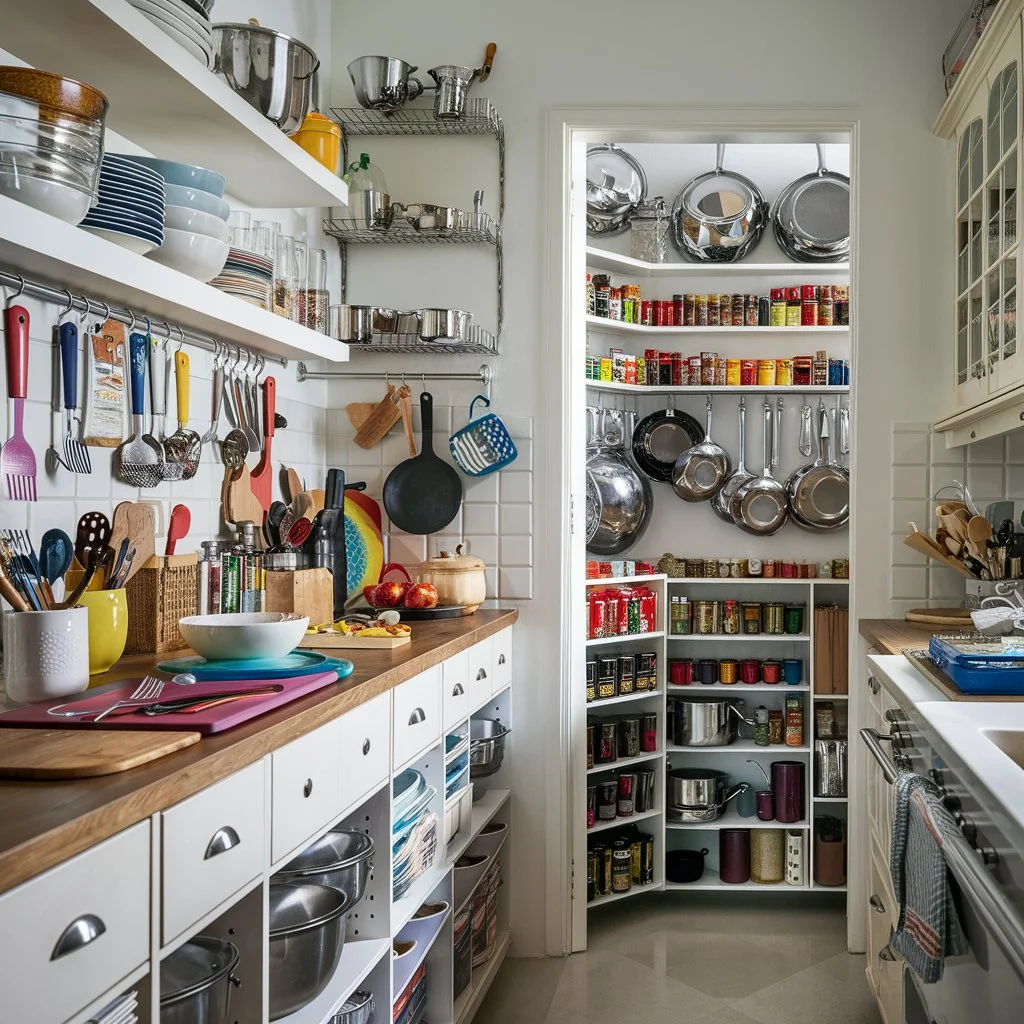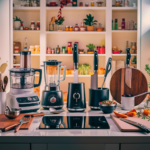Introduction
Tips and methods for kitchen organization are essential for increasing productivity, streamlining the cooking process, and improving the whole culinary experience. The goal of this post is to provide a thorough overview of kitchen organizing strategies that are both innovative and doable.
Setting the Foundation for Organization
Assessing Your Kitchen Space
Analyze the design of the kitchen and note any areas that need work.
Take into account the accessibility of frequently used items and the workflow patterns.
Decluttering and Simplifying
Techniques for organizing drawers, cabinets, and counters.
Advice on how to recognize and get rid of kitchen appliances that aren’t being utilized or needed.
Establishing Zones
Create useful zones in the kitchen, such as areas for prep, cooking, and storing.
Sort the materials, utensils, and tools according to workflow and frequency of use.
Maximizing Storage Solutions
Smart Cabinet Organization
Make use of cabinet organizers like pull-out racks, door-mounted bins, and stackable shelves.
Make the most of the vertical space by adding movable shelves and pot and pan hanging hooks.
Creative Drawer Organization
Utensils, cutlery, and electronics can be kept organized by using drawer dividers and inserts.
Think about putting small tools, kitchen linens, and spices in drawer organizers.
Efficient Pantry Organization
Install pantry shelving systems with baskets and shelves that can be adjusted.
Put labels on the dry goods, grains, spices, and baking ingredients containers.
Maximizing Under-Sink Storage
Install shelves, bins, or pull-out trays to provide under-sink storage.
To arrange cleaning materials and dishwashing necessities, use caddies or stackable boxes.
Innovative Kitchen Hacks and Solutions
Magnetic Storage Solutions
To store metal utensils, spice jars, and knives, use magnetic racks or strips.
Make a magnetic memo board to hold recipe notes, grocery lists, and meal plans.
Utilizing Wall Space
Install racks or shelves on the wall to hold jars, cookbooks, and ornamental items.
To organize pots, chopping boards, and cooking utensils, hang pegboards with hooks.
Repurposing Everyday Items
For kitchen organizing, consider repurposing objects such as tension rods, shoe organizers, and mason jars.
Measure cups, tiny appliances, and culinary gadgets can all be kept organized in drawers.
Customized Solutions for Small Kitchens
Look at furniture solutions that save space, like rolling carts, foldable tables, and small islands.
Take into consideration using hooks or hanging racks to store mugs, pans, and utensils.

Maintenance and Sustainability
Regular Maintenance Practices
Set up a cleaning schedule to keep areas neat and tidy.
Check expiration dates and rotate pantry products on a regular basis.
Sustainable Kitchen Practices
Use eco-friendly substitutes and reusable storage containers to cut down on trash.
Investigate environmentally friendly grocery packing options and compost food wastes.
Conclusion
List the main ideas covered in the essay, highlighting the significance of organization for a practical and pleasurable kitchen.
Urge readers to put the advice given into practice in order to establish a streamlined and effective kitchen.



















